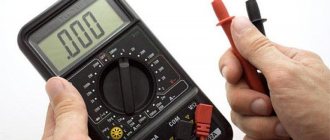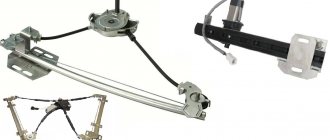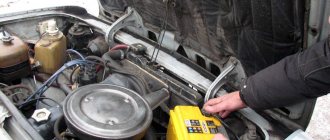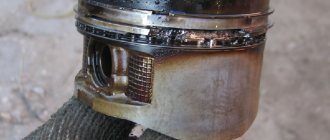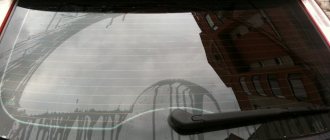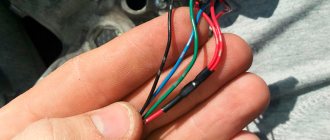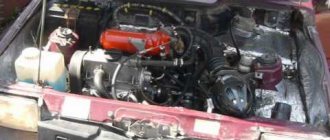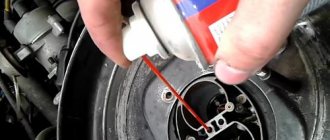What is a short circuit and the reasons for its occurrence
A short circuit (short circuit) is a contact between wires with different potentials.
In home wiring, a short circuit most often occurs between the phase and neutral wires, and with three-phase wiring, a short circuit between phases, as well as between one of the phases and the neutral conductor, is possible. Since the resistance of the electrical wiring wires is insignificant, during a short circuit the current magnitude increases sharply, causing a sharp heating of the conductors. If the circuit breaker does not work, the heating can reach critical levels and cause a fire in insulation and flammable materials.
What should be the cross-section of the electrical wiring?
The most important step that will significantly reduce the risk of overloading electrical wiring is related to the correct selection of conductor cross-sections. If the wires are thick, they will heat up less when overloads occur, and will also have time to release heat to the environment in a timely manner.
Each load has its own specific cross-section of wires. In the PUE (electrical installation rules) there is a special table 1.3.4 from which you can determine the cable cross-section for a particular load. But, as they say, it is better to choose wires with a small margin than to face a number of unforeseen difficulties and possible danger in the future.
For example, experienced electricians recommend choosing wires for electrical wiring with a small margin. For lighting groups, cables with a cross-section of 1 mm², and for sockets, at least 2.5 mm². Of course, a lot depends on the installed electrical appliances in the house, the presence of an electric stove, air conditioner, etc. Therefore, it would be better to calculate in advance the total power of all electrical appliances, and only then draw any conclusions.
Types of short circuit
Electricity is used everywhere in both the domestic and industrial sectors. To reduce the risk of a short circuit to a minimum, a number of measures and devices have been developed to provide protection against short circuits. However, in order to accurately understand in which case and which device to use, you need to know the types of circuits. The main ones are:
- in DC circuits;
- in AC circuits (between: phase and ground, two different phases, three phases, two different phases and ground, three phases and ground).
The share of single-phase short circuits is 65% of damage, 2 phases with earth - 20%, two-phase - 10%, three-phase - 5%. Complex types of damage often occur, accompanied by multiple asymmetries. This means a type of closure of various phases that occurs at several points at the same time.
The main causes of short circuits in household electrical wiring:
- aging of insulation leads to its destruction, especially at intersections and kinks. High humidity has a damaging effect on the insulation condition;
- mechanical damage to the insulation between the wires. Very often, such damage occurs due to driving an ordinary nail directly into the wiring hidden in the wall. When carrying out various construction works, it is recommended to determine the location of the wiring in the wall;
- the wiring is not designed for real power consumption, so during operation the wiring heats up and the insulating layer melts;
- a malfunction may occur in any electrical device, which will lead to a short circuit in the network;
- There are known cases of short circuits caused by rats chewing the cable.
How to Find a Short Circuit in the Wiring?
It is almost impossible to determine the location of the short circuit in advance, but after the circuit breaker has tripped, you need to move on to searching and localizing the place of its occurrence.
You need to act sequentially, according to a certain algorithm:
- Thorough visual inspection. If it was possible to detect damage to the insulation and bare wires that are in contact, then the cause is probably located here. Damage usually appears at the junctions and crossings of wires, in sockets, and in junction boxes. Burnt wire sheath insulation is a signal of a possible fault location;
- All electrical appliances and lamps are turned off, then the resistance between phase and zero, as well as between phase and ground, is measured with a megohmmeter. In the event of a short circuit, the device will show a very small resistance value.
- Sometimes a short circuit occurs in connected electrical appliances. In this case, it can be calculated by elimination. All appliances turn off and the circuit breaker turns on. Then the devices are connected one by one. Until the machine goes off.
- Traditional methods for determining a short circuit by the sound produced at the site of the short circuit are also known. Another way is to identify the problem area by the smell of melting or burning plastic. Of course, experts do not recommend using old-fashioned methods, because now there are devices that accurately determine the location of an electrical fault.
Short Circuit Detection Techniques
If the circuit breaker has tripped, then the worst has been avoided. Then the question arises of how to find a short circuit in the apartment wiring. There is no need to panic. There is a chance that you will be able to detect the malfunction yourself without calling a specialist. Finding a short circuit in an apartment is divided into four simple steps:
- Visual inspection.
- Elimination method.
- Detection by sound and smell.
- Use of special measuring instruments.
Visual inspection
It is not a fact that the short circuit point is in the wall. Usually the fault lies on the surface. It can be seen with the naked eye and quickly eliminated.
Extension cords need to be inspected. Especially in places where the cable bends and the plug is connected. Often one wire comes loose and dangles in the air. A phase contact that is not secured by anything can touch the neutral contact and lead to a short circuit. Next are the sockets. Wires can also fall off and end up in the wrong place.
Visual inspection of electrical wiring in a private house
Elimination method
If a simple inspection does not help, you will have to move on to the elimination method. The main thing is to understand why the machine is triggered. It is worth remembering under what circumstances the short circuit occurred. If the embarrassment occurred at the moment when the iron was plugged into the socket, then the problem lies there. If not, you should turn off the household appliances one by one until the circuit breaker stops tripping.
If absolutely all devices are unplugged and the lights are turned off everywhere, then you will have to move on to the next stage. It is important to remember to check devices that are always plugged in (refrigerators, televisions).
Additional Information. You will never find a short circuit that is not there. Old circuit breakers are prone to false trips. That is, there is no short circuit in the wiring, and the machine lives its own life and turns off the apartment for no known reason. Before searching for a short circuit, it would not hurt to make sure that the protection devices are operating adequately and find out for sure why the circuit breaker trips.
Sound and smell detection
When a short circuit occurs, a lot of energy is released. She doesn't leave without a trace. Often in the problem area the wires heat up, the insulation melts, smoke is formed and there is a smell of burning. If the circuit is unstable, then when voltage is applied at the short circuit point, a bright flash with sparks and a bang will occur. Its intensity is such that it is almost impossible not to notice this phenomenon even in hidden wiring.
This and the previous methods require periodic re-switching of the voltage. This, in turn, will lead to a short circuit again. It is advisable to carry out such experiments a minimum number of times and with at least some knowledge and experience of such work. If possible, it is wiser to call a professional electrician. He will most likely come with a multimeter or megger.
Use of special measuring instruments
The method requires electrical engineering education. The closure point is sought using measuring instruments:
- multimeter;
- megohmmeter;
- indicator screwdriver;
Checking electrical wiring using a multimeter
These devices allow you to ring the apartment's electrical network and determine in which area there is a point with an abnormally low resistance between the phase and neutral (ground) conductors. The most effective way to find short circuits is a megohmmeter. But it is much safer to use a multimeter in diode testing mode. If a section of wiring with a short circuit is connected to its terminals, the device beeps.
Consequences of an electrical short circuit
When bare wires come into contact with different potentials, a short circuit occurs, the current increases sharply, the temperature rises and the insulation melts, and sometimes even an electric arc occurs.
The consequences of a short circuit in the home electrical network can be extremely unpleasant:
- the temperature at the short-circuit site, especially when an electric arc occurs, can reach the melting point of the wiring strands, and the process itself will become explosive;
- a fire may occur as a result of overheating of the wires and ignition of the insulation;
- Some electrical appliances may fail.
How to eliminate the short circuit that has occurred?
Finding the location of the short circuit is only half the battle, because it needs to be eliminated. To do this, as when searching for a short circuit, you also need to act sequentially in a certain order:
- the detected damaged area should be removed, new wires installed and connections carefully insulated;
- It is recommended to replace switches or sockets that have melted or burned out with new ones;
- The old electrical wiring should be replaced completely, because she has already begun the process of destruction of insulation and a short circuit will inevitably arise, but in a different place;
- A short circuit in household appliances can be eliminated by repairing or replacing it.
How to eliminate sparking in an outlet?
Having dealt with the reasons, let's move on to ways to eliminate each of them. Let's start in the same order:
- Mismatch between plugs and sockets can be easily resolved. It is necessary to bring them to a single type. We recommend choosing modern standards, otherwise you will need to change the plugs on each newly purchased electrical appliance. That is, we are replacing Soviet sockets with European standards. In addition, if the house has vintage electrical equipment, we replace the old plugs on it.
- To eliminate an outlet overload, you can go in several ways:
- Replace the electrical installation device with a more powerful one. For example, if the outlets are rated at 10.0 A, then replace them with 16.0 A products.
- If one outlet is not enough, then install an outlet block. This will be much more reliable than using a tee. If for some reason there are difficulties with installing the socket block, use a double socket installed on one seat. Double socket
- You can try to repair a worn plug connector if the case is not very advanced. To do this, you need to remove the socket (after de-energizing the line from which it is powered), clean it, and then bend the contact plates using duckbills (thin pliers). If the socket cannot be repaired, we replace it.
A function that returns a function
In the first example, the function returned a number. As far as we remember, a function can return anything. Let's look at an example of a function that returns a function, as this is essential to understanding closures. Here is an example of what we will be analyzing.
1: let val = 7 2: function createAdder() { 3: function addNumbers(a, b) { 4: let ret = a + b 5: return ret 6: } 7: return addNumbers 8: } 9: let adder = createAdder()10: let sum = adder(val, 8)11: console.log('example of function returning a function: ', sum)
Let's go back to the analysis step by step.
Line 1: We declare a variable in the global execution scope and assign it a number. Lines 2–8. We declare a variable named in the global execution scope and assign it a function description. Lines 3-7 describe the function. As before, we will not perform this function for now. We simply store its description in this variable (). Line 9: We declare a new variable in the global execution scope. Temporarily the value of this function will be . Still line 9. We see brackets, which means we need to call or execute a function. Let's query the global execution area memory and look for the variable. It was created in the second step. Great, let's call. Call the function. Now we are on line 2. A new local execution area has been created. We can create local variables in the new execution scope. The engine adds a new region to the call stack. The function has no arguments, so we move straight to its body. Still lines 3–6. We have a new feature announcement. We create a variable in the local execution area
It is important. exist only in the local execution area
We store the function definition in a local variable. Now we are on line 7. We are returning the contents of the variable. The engine starts looking for the variable and finds it. This is the definition of a function. So we return the function definition for . Everything between the parentheses on lines 4 and 5 creates a function definition. We also remove the local execution scope from the call stack. The local execution area is then destroyed. no longer exists. However, the function declaration still exists because it was obtained from the function and assigned to the variable. This is the variable we created in step three. Now we are on line 10. We define a new variable in the global execution scope. Temporary meaning. Now we need to execute the function. What function? A function that is stored in a variable. We look for it in the global execution area and, of course, find it. This function takes two parameters. Let's extract these two parameters to call the function and pass the correct arguments. The first parameter is the variable that we defined in the first step. Its value is , and the value of the second parameter is . Now we need to execute the function. The function definition is described in lines 3–5. A new local execution area has been created. Two new variables are created inside the local scope, and . These correspond to the values and , as the arguments we passed to the function in the previous step. Line 4. A new variable is declared. It is declared in the local execution scope. Line 4. Addition completed. We added the values of the variable and . Result() is assigned to the variable. The function returns a variable. The local execution scope is destroyed, removed from the call stack, the variables , and no longer exist. The returned value is assigned to the variable we defined in step 9. We print the value of the variable to the console.
As expected, the console displays the value 15. We have completed a considerable number of steps. I tried to show a few ideas here. First, the function description can be stored in a variable and its description will be invisible to the program until it is called. Second, each time the function is called, a (temporarily) local execution scope is created. This execution area disappears as soon as the function ends. The function ends when it encounters or a closing curly brace.
Short circuit current calculation
Calculation of short circuit currents in the DDECAD program
Short circuit voltage is the voltage at which an electric current equal to the rated current flows through the closed winding of the transformer.
The short-circuit voltage can be determined by the voltage drop across the transformer. This value characterizes the total resistance of the windings.
The currents resulting from a short circuit significantly exceed the rated value for which the entire electrical circuit is designed. They can burn out weak points, destroy them and lead to fire.
To eliminate an emergency situation, specialists at the design stage begin to deal with the defect and calculate the theoretical possibility of the occurrence of large currents. Taking into account the calculated data, power elements and protective components of the circuits are selected. They also deal with large currents during equipment operation.
The calculation of single-phase and three-phase short-circuit current is carried out using Ohm's law, the impedance of the circuit, the power characteristics of the power and the structure of the electrical installation used. Accuracy may vary depending on the intended use of the instruments.
Correct use of sockets
But of course it’s better to just not let the outlet catch fire. Indeed, in most cases, we practically set the socket on fire with our own hands by mishandling it. Therefore, we will give just a few simple rules that will allow you to avoid getting into such a “hot” situation.
- We will not advise you not to insert foreign things into the outlet, not to water it, and not to do other completely obvious things. Here are the rules that everyone has probably heard about, but for some reason forgotten.
- First of all, remember that each outlet has its own current rating. This parameter is set based on the power of the contact part of the socket. Typically, sockets are made for a current of 6A, which approximately corresponds to devices with a power of 1.3 kW. There are sockets for 10, 16 and 25A, the price of which is naturally slightly higher. More powerful devices can be connected to them. But their power still should not exceed the rated current of the outlet.
In the photo you can see where to look at the rated current of the outlet
- The socket must be firmly fixed in the seat. There should be no play when pulling the fork. Otherwise, each time the socket is used, the wires will be subject to deformation, which will ultimately lead to their breaking and poor contact.
- Do not insert larger diameter plugs into outlets. This leads to deformation of the contact part of the plug and, as a result, poor contact. This in turn leads to heating.
Remember! The higher the resistance of a conductor, the more heat it generates when current flows. At the same time, the higher the temperature of any conductor, the greater its resistance. It turns out that the more the wire is heated, the less current it can normally pass. Therefore, an overheated wire will certainly burn out during further operation.
- If the plug or socket shows burnt marks as in the video, be sure to remove the voltage from it and clean it. Otherwise, it will inevitably lead to fire.
Understanding JavaScript Closures
In the chapter on JavaScript functions, you learned that in JavaScript, the scope of a variable can be global or local. Since ES6, you can also create block-scoped variables using the let keyword.
A global variable can be accessed and manipulated anywhere in the program, whereas a local variable can only be accessed and manipulated within the function in which they are declared.
However, there are certain situations where you want a variable to be available throughout the script, but you don't want any part of your code to accidentally change its value.
Let's see what happens if you try to achieve this using a global variable:
// Global variable var counter = 0; // Function for working with the 'counter' variable function makeCounter() { return counter += 1; } // Call the function makeCounter(); console.log(counter); // Result: 1 makeCounter(); console.log(counter); // Result: 2 // Attempt to change the variable 'counter' from outside counter = 10; console.log(counter); // Result: 10
As you can see from the example above, the value of the counter variable can be changed from anywhere in the program without calling makeCounter().
Now let's try to achieve the same with a local variable and see what happens:
function makeCounter() { // Local variable var counter = 0; //Increasing the value of a local variable return counter += 1; } // Call the function console.log(makeCounter()); // Result: 1 console.log(makeCounter()); // Result: 1
In this case, the counter variable cannot be manipulated externally since it is local to the makeCounter() function, but its value will also not be incremented after subsequent function calls because every time we call the function, it resets the value of the counter variable. JavaScript closure can solve our problem.
A closure is an inner function that has access to the scope of its parent function, even after the parent function has finished executing. This is achieved by creating a function inside another function. Let's look at the following example to see how this works:
function makeCounter() { var counter = 0; // Internal function function make() { counter += 1; return counter; } return make; } /* Execute the makeCounter() function and store the returned value in the myCounter variable */ var myCounter = makeCounter(); console.log(myCounter()); // Result: 1 console.log(myCounter()); // Result: 2
As you can see in the above example, the inner function make() is returned from the outer function makeCounter(). So the value of myCounter is the internal function make(), and calling myCounter calls make(). In JavaScript, functions can be assigned to variables, passed as arguments to other functions, nested within other functions, etc.
You can also see that the inner function make() can still access the value of the counter variable defined in the outer function even if makeCounter() has already finished executing. This happens because functions in JavaScript form closures. Closures internally store references to their external variables and can access and update their values.
In the example above, the make() function is a closure whose code references the counter of an external variable. This implies that whenever make() is called, the code inside it can access and update the counter variable because it is stored in the closure.
Finally, since the outer function has completed execution, no other part of the code can access or manipulate the counter variable. Only the internal function has access to it.
The previous example could also be written using an anonymous function expression, like this:
// Example with an anonymous function var myCounter = (function() { var counter = 0; // Internal anonymous function return function() { counter += 1; return counter; } })(); console.log(myCounter()); // Result: 1 console.log(myCounter()); // Result: 2
Negative impact of short circuit for a person and his property
A short circuit, depending on the location of its occurrence, leads to detrimental consequences for property and the safety of human life. These include:
- burning and failure of electrical appliances;
- ignition of electrical wiring;
- a decrease in the voltage of the electrical network (in industrial conditions it leads to a shutdown of enterprises);
- decrease in the efficiency of power supply systems;
- the occurrence of electromagnetic influence leads to disruption of the functioning of communications located underground.
Measures to prevent short circuits in the home electrical network
To reduce the likelihood of a short circuit, the homeowner should periodically inspect his lighting network. Of course, an inspection will not give a 100% guarantee, but it will help eliminate faults that lead to the appearance of a short circuit in the network.
During the inspection, the following actions must be performed:
- if the socket starts to heat up, sparks, or has a plastic smell, then it should be replaced with a new one or repaired;
- an audit of the entire lighting network and power group of wires is carried out every six months. You need to pay attention to the color of the insulation. Possible places of dangerous heating are determined by the color of the wire insulation;
- installation of a circuit breaker with RCD. The circuit breaker will turn off the network in the event of a short circuit, and the RCD (residual current device) reacts to a person touching exposed wires. The use of this device can save lives;
- the cross-section of the electrical wiring wires is calculated based on the total power of all electrical appliances;
- During installation, do not lay the wiring cables too tightly;
- If you need to do any work, for example, drill a wall, you should make sure that there is no electrical wiring under the plaster in this place.
Do not turn on partially damaged appliances
If the cable in an iron or refrigerator is frayed and the inner shell is visible, do not turn it on until you have repaired it. First, carefully remove the top layer of insulation in the damaged area and inspect the external condition of the insulation. Wrap all damage and cracks tightly with electrical tape. Then put the top shell back and rewind it too.
The plug often needs to be replaced, for example if it is very loose or the housing is damaged. It is sold in any transition or store, so don’t delay your purchase.
Damage can occur not only on the power cord, but also inside. For example, if you turn on something and hear sparking inside. This already indicates a serious malfunction, even if the electrical equipment works, at first glance, normally. In this case, unplug it from the outlet and take it to a service center (or repair it yourself).
Remember that turning on a faulty electrical appliance often leads to a short circuit, which will destroy all wiring in the house and is likely to cause a fire. If you remain nearby, you risk serious injury.
Even if you have checked all the wiring and turn on only new, working equipment, this does not provide a 100% guarantee that an accident will not occur in your network. Therefore, always install high-quality circuit breakers and RCDs in the panel.
When laying parallel, separate the lines
If you have several power lines laid in parallel, try to maintain a distance of at least 10 cm between them. The fact is that when the cable is laid tightly, it cools worse, because of this the sheath heats up more, and its insulating properties are lost. As a result, it may melt or a breakdown may occur and the contacts will close.
For parallel installation, special cable channels with a partition in the middle are also used. It isolates the lines of force from each other.
Protect the cable when installing
Try to make hidden wiring in walls or plaster, where the insulation will last much longer and there is less risk of damage. When wiring is open, try to use protective equipment: cable ducts, plastic pipes, corrugation. By protecting against external factors, they increase the service life of the wiring several times.
Replace aluminum wiring with copper
With a smaller wire cross-section, copper conducts electricity better and can withstand greater loads. In addition, it withstands more mechanical bending and does not oxidize as quickly as aluminum.
New PUEs generally prohibit the installation of aluminum wiring in household networks, since it is potentially dangerous and less efficient in operation than copper.
In Soviet times, aluminum wiring was often used in residential buildings. If your apartment still enjoys such a “Soviet legacy”, think about it; its service life has probably expired long ago.
Don't ignore dust and moisture protection
When placing sockets, switches or electrical appliances in places of high humidity, take care of a high level of dust and moisture protection. For example, outdoors where precipitation, dew and fog are possible, it should be at least IP67. The minimum level for a bathroom is IP44, if there is a possibility of direct water splashes, then IP56 is better.
If water gets inside, the socket will begin to spark, the plastic casing will melt, and eventually a short circuit will occur. Therefore, always choose the optimal level of dust and moisture protection.
Protection methods
Since the occurrence of this phenomenon cannot be completely excluded, therefore all protective measures are based on the prevention and prevention of short circuits. The main task is to apply measures that reduce the likelihood of an emergency. These include:
- Monitoring the condition of insulating material on live elements or electrical transmission lines. Once every three years, tests are carried out on the insulation of electrical wires in industrial premises, and in household highways, its reliability is determined according to its service life. For copper wire it is 40 years.
- Before carrying out repair work related to drilling walls, it is necessary to determine the location of hidden wires using a special device.
- Avoid or minimize the use of electrical equipment in the bathroom and other areas with high humidity.
To ensure the safety of electrical equipment, automatic switches are installed both at the input and on each internal line. The switch is triggered when a large current flows through it, which is formed as a result of a short circuit in the electrical network or household appliance.
